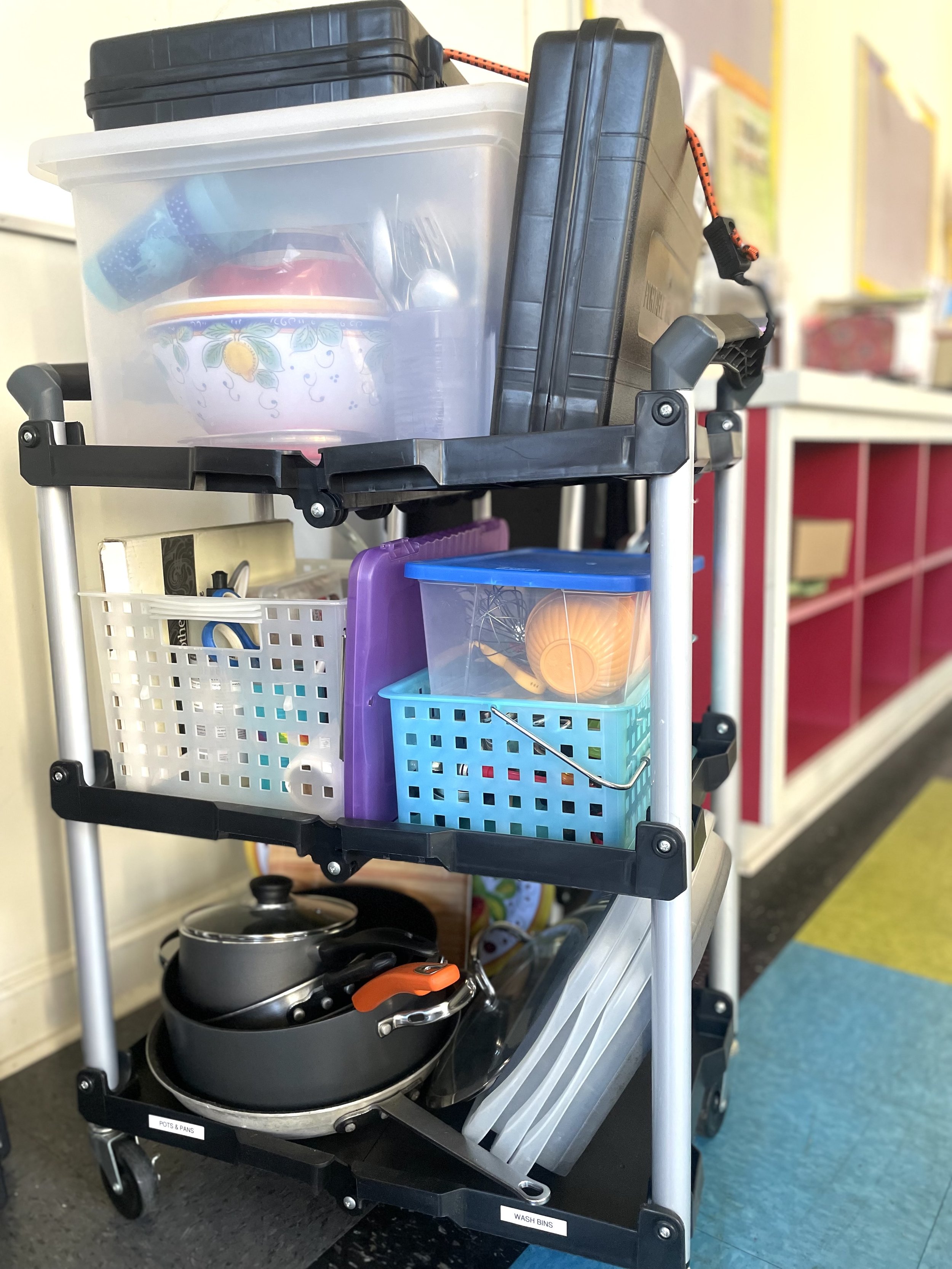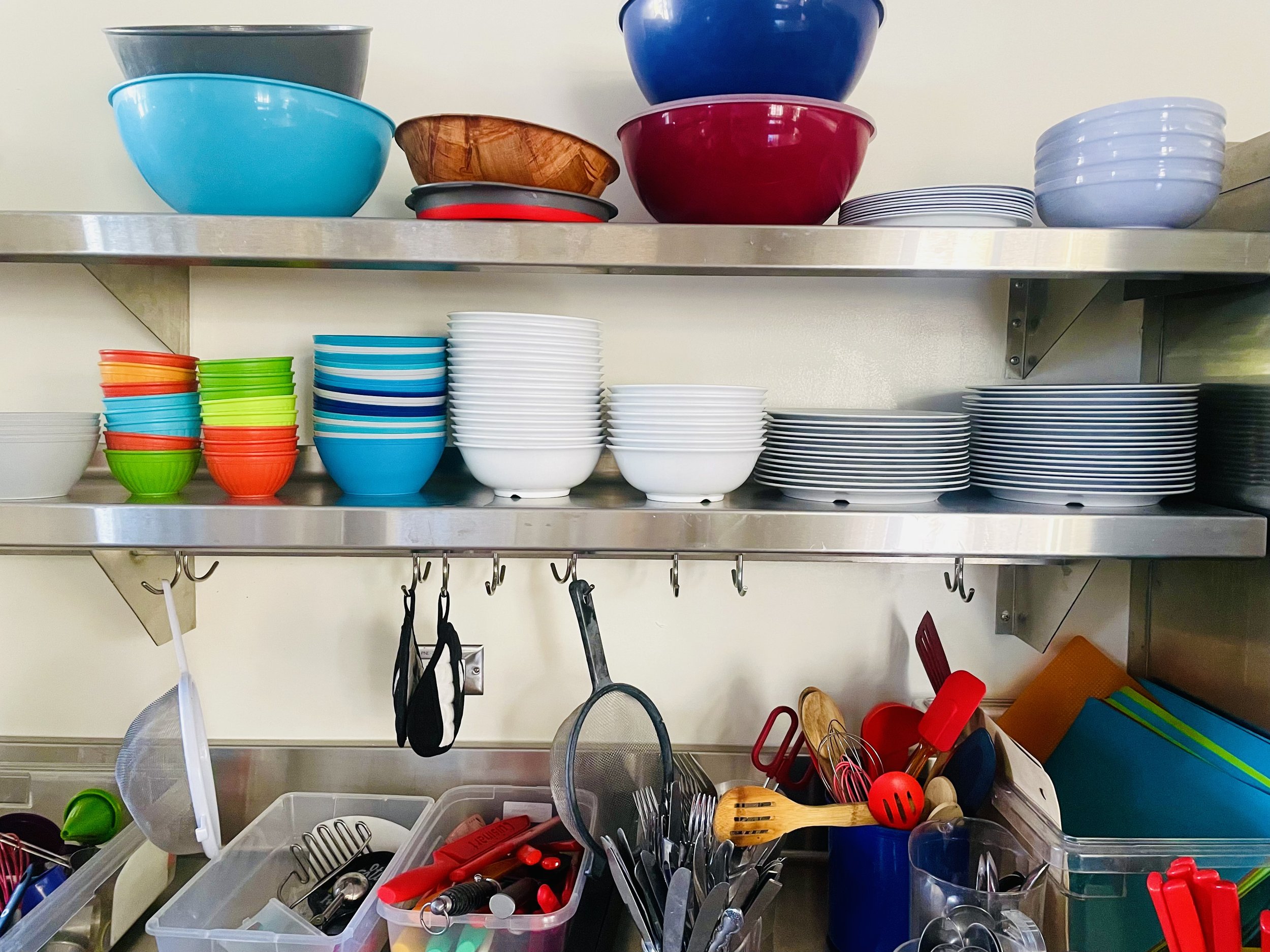2022 Word of the Year
It’s that time of year…we’re taking down the lights and tinsel, making resolutions to eat less and exercise more, and crossing our fingers that there is light at the end of the COVID tunnel. Here at AtoZ, we are announcing our Word of the Year. What’s that, you ask? Well, it’s a word that expresses our organizational intention for the year. Unlike our Mission (teaching people to cook), our Vision (that everyone in Santa Barbara county cooks for themselves and their community) or our Values (Respect, Gratitude, Curiosity, Confidence, and Resourcefulness), which remain stable over the years, our Word of the Year is just that — a capacity-building intention for the year. Our 2021 Word of the Year was communicate. We focused a lot of energy on spreading the word about our programs. We have been advertising in The Independent, 805Living, and Edible Santa Barbara. We launched our podcast “What Are You Hungry For?” (more episodes coming soon). Many of you have seen us at our Farmer’s Market table on Tuesdays and Saturdays. We have been reaching out to non-profits to partner with them to reach their constituents. And we hired a Social Media Manager to make sure that we are getting our message to a growing audience in a consistent and branded way. Whew! We really embraced our word! Now it is a habit — that’s how habits work.
Looking toward 2022, we are ready for more. Drum roll, please…….infrastructure! You’re probably thinking that this word is a bit over-used right now. The changes, pivots, re-boots, etc. of COVID have laid bare the challenges of most organizations (businesses, families, communities, countries). We’ve recognized the visible and invisible hiccups in our systems, and we’re all trying to make improvements to move ourselves forward.
You’re probably also thinking — Is AtoZ building roads and bridges? Lots and lots of gingerbread houses? Definitely not roads or bridges, or tunnels or even sidewalks. Maybe one gingerbread house, but certainly not a neighborhood.
in·fra·struc·ture
(ĭn′frə-strŭk′chər)
n.1. An underlying base or foundation especially for an organization or system.2. The basic facilities, services, and installations needed for the functioning of a community or society
We are building the foundation that will help our organization grow, scale up, offer more classes and reach more people. We are looking at Staff, Stuff, Space, and Systems. Read on to see what we’re planning, and see some possible suggestions for your own infrastructure:
STAFF
What we’re doing: We now have a Program Coordinator and a Social Media Manager, as well as 3 Chef Educators. One of our Chef Educators is an LSCW, and she has written a mindfulness curriculum that we will begin teaching this winter. We had our first-ever staff retreat, with plans for more. We have been identifying organizational needs, and assigning roles to our staff. I know this sounds simple, like what every company does, but as a start-up, it actually takes a lot of effort to identify the needs and match them to the person. We have grown from two staff and one Chef Educator in January 2021 to the current level we are at now.
What you can do: If you run a household, you may not think about “staff”. Only the wealthy have household staff. But how do all the jobs get done around your house? If you’re the one doing it all, consider assigning tasks to members of the family this year (and create habits by the end of the year). Kids can do their own laundry (work backwards from the process: start them off with putting away folded laundry, then teach them to fold it, then teach them how to actually run the laundry.) Setting the table, unloading the dishwasher (or doing the dishes), feeding pets, making lunches — all of these tasks can be assigned to your “staff”.
STUFF
What we’re doing: Last year, we moved our stuff from a storage unit into an office and kitchen. All our stuff is in one place! That’s great because we have it all at our fingertips, but it’s also a lot of stuff in one place. So we are doing a better job of organizing it. Some of it is “like with like” — all of the pots and pans in one place. Another way we organize is to create “bundles” — everything we need for a class put together in one place.
What you can do: Look at your “stuff”. Do you wander around the house or garage gathering everything you need for a project? Can you bundle all the gardening gear in one basket? Are your baking ingredients spread over three different cupboards? Figure out where you’re wasting time and energy on your stuff, and create infrastructure to support your regular tasks.
SPACE
What we’re doing: In addition to our awesome office — with all our stuff in one place — we have a teaching kitchen and a garden. We are evaluating the best ways to utilize our space. The kitchen is underutilized, so we are exploring how to add more classes — Daytime classes for parents after they drop kids off at school? Mid-morning classes for homeschool groups? Easy weeknight dinner classes? Out in the garden, we have rearranged our raised beds to make more room for outdoor class space.
What you can do: Are there underutilized areas of your house or garden. Is your garage full of “stuff” instead of cars? Do you have a sprawling (or tiny but sunny) front lawn that would be a great spot for a bountiful garden?
SYSTEMS
What we’re doing: This last item ties everything together. How do we choose what kitchen items to bundle together? How do we know which classes our Chef Educators and Volunteers are available for? How do we create and fill classes? All of these questions are best answered by systems. Before each semester, we sit down and map out the recipes — based on the season (what can we get from Farmer’s Market?), the classes in a given week (whether we have a dinner class or a short class), whether we want to focus on a holiday, etc. In the fall, we started using Connecteam — scheduling software that lets our Chef Educators and Volunteers sign up for the classes they want to teach. It also logs staff and volunteer hours, making my life much easier. We continue to identify areas that can be systematized. Whenever we launch a new project, we do it with an eye to replication.
What you can do: Are there jobs that you do every day, every week, every month, or every year? Does it feel like you’re starting from scratch every time, or you keep forgetting something important? It’s not a weakness or failure on your part — it’s a failure of your system. When my kids were young, I created packing lists for them — simple, in an excel spreadsheet. I listed all the things they might need on a trip — long-sleeve shirts, short-sleeve shirts, pants, shorts, blankies, binkies, diapers, socks, etc. Depending on the destination and duration, I would fill in how many of each thing we needed. Then I could check off the items as I packed them, and highlight the items that would be last-minute — the blankie fresh out of the laundry, a pack of diapers from the drug store as we hit the road. When they got older, I turned the lists over to them. If you have deja-vu — “Didn’t I just go through this last time we traveled/shopped/cleaned up?” — then it’s time to consider creating a system.
We wish you and your families and communities all the best hopes and dreams for 2022! We’d love to hear your ideas for your Word of the Year, or your plans to improve your own infrastructure.





